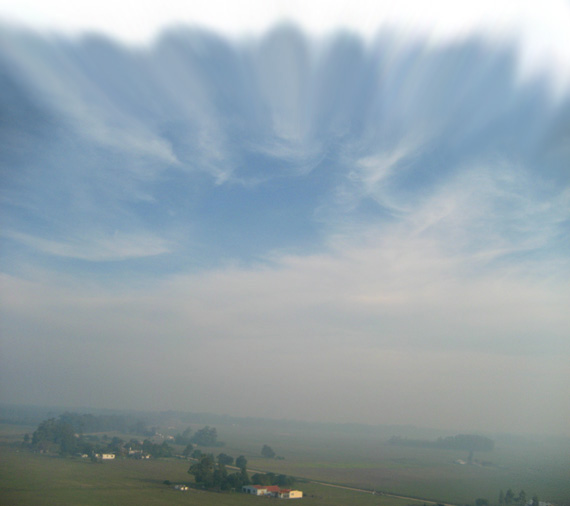For the past week, almost 100 thousand hectares
of grasslands are burning in the Paraná Delta,
Entre Ríos and Santa Fe, generating a dense
cloud of smoke that is carried by the wind and
has engulfed the city of Buenos Aires and the
south of the province. The smoke has also
affected the cities of southern Uruguay,
covering the riverside city of Colonia, as well
as Montevideo and Punta del Este, and even
Rocha, on the border with Brazil.
The Argentinean government has laid the blame on
300 producers, owners and tenants of these
fields, who it accuses of “greed,” having
intentionally started these fires to avoid the
costs of mechanically and/or chemically cleaning
their lands to make them fallow. They have all
been reported to the judicial authorities, who
are investigating the origin of the fires.
Hundreds of people, including 137 children, have
been treated in hospitals around Buenos Aires.
Most of these patients complained of respiratory
problems. After several accidents involving
multiple vehicles, with mortal and seriously
wounded victims, a dozen routes in the affected
area were closed intermittently on account of
the scarce visibility that rendered circulation
dangerous.
In Montevideo, emergency healthcare
services registered a 30 percent increase in the
number of calls from people suffering from a
variety of smoke-related complaints.
The Argentinean Minister of the Environment,
Romina Picolotti, accused producers of
acting “barbarically,” because as soon as
firefighters and rescue workers put out the
fires, producers ignited new ones.
If Picolotti and the Argentinean
government are right, in addition to the
criminal and civil liabilities that these
terrible actions may involve, the situation
exposes the extremes of immorality that are
possible when one acts motivated solely by the
desire to make a profit at all costs. Subjecting
15 million people to an unprecedented
aggression, destroying the ecosystems of the
burnt areas, rekindling fires extinguished by
firefighters, generating potentially mortal
highway conditions… when it comes to making
money, anything goes.
Little does it matter if these producers are
raising cattle or planting soybean: the
production system and the mentality are one and
the same. This should not surprise us, as these
same “productive agents” have been bombarding
the region with glyphosate and other
herbicides, fertilizers and insecticides for
years, with the complicity of the governments,
forcing genetically modified crops right
up to our doorstep.
Many of these chemical products are applied
indiscriminately, and the soil receives such
high levels of agro-toxic chemicals that
they seep down into the groundwater. These
substances have even contaminated the recharge
area of the Guaraní Aquifer, the world’s
largest fresh water underground reserve.
Unfortunately, these substances do not give off
smoke, and therefore the damage is easier to
hide, although it is no doubt much more
widespread in space and in time and its effects
in terms of environmental contamination and
human health risks are much more severe.
This time the “barbaric attitude” was exposed to
the public. But when the fire is extinguished
and the smoke clears, pollution will remain and
will continue to spread, on both sides of the
Uruguay and Plata Rivers.
It would be naïve to expect an ethical attitude
from any of these social and political actors,
who will only feel they have to limit their
actions if they are pressured by a society that
is aware of the problem. Perhaps this “dress
rehearsal” of an environmental catastrophe will
help the majorities realize that today it’s
smoke, but tomorrow it may be something much
worse. That smoke is something you can see and
breathe, but that there are other contaminants
that go unnoticed for a long time. And that
there is only one environment and it belongs to
us all, an environment without borders, without
diving walls, and without encapsulated “private
properties.”
Let’s hope we can see through the smoke screens.
